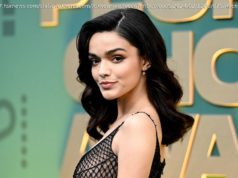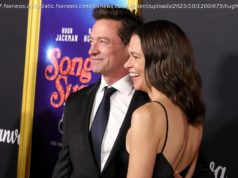The choreographer’s staging of T. S. Eliot’s classic, at Bard College, might be the greatest creation of dance theater so far this century.
In her new staging of T. S. Eliot’s poems “Four Quartets,” the choreographer Pam Tanowitz has created dance theater of the highest caliber. This had its world premiere on Friday at Bard College’s Fisher Center for the Performing Arts. After one viewing, on Saturday night, I’m inclined to call this the most sublime new dance since Merce Cunningham’s “Biped” (1999).
Few poems are as suffused in ideas of dance as these Eliot “Quartets,” written between 1936 and 1942. Eliot piercingly grasped the principle — obtained surely from Hindu religion — that, in dance, motion contains stillness and stillness motion. (“At the still point, there the dance is,/ But neither arrest nor movement.”) And these references to dance illustrate Eliot’s larger philosophical points about time, memory, culture, history, life and death, recurrently expressed in terms of paradox (“In my beginning is my end”). In Ms. Tanowitz’s production, which ran through Sunday, the dance itself gives us multiple aspects of philosophy.
The movement here does not illustrate the words in literal terms. It’s more the other way round: The stage world gives us the amazing impression that Eliot’s words arise out of Ms. Tanowitz’s dance imagery. In ensembles that combine pattern and asymmetry, in duets and solos of thrilling contrasts and insistence, the choreography becomes the poems’ outer framework (dance often proceeds at length between stanzas) and their spiritual accompaniment.
The actor Kathleen Chalfant, seated between stage and musicians, reads all four poems with a quietly sonorous range of expression. She makes them sound contemporary and newly contemplative; she understates the dimensions that can seem religiose or portentous; she shows both wry humor and deep poignancy. In the first quartet, she attends so much to sense that she seems to underplay Eliot’s rhythm. But by the fourth, speaking in darker tones, she reveals a pulse within the verse with telling drama.
A superb new score by the illustrious Kaija Saariaho is also played, sometimes between stanzas, sometimes underneath the words, by the four musicians of The Knights (violin, viola, cello, harp). Varied effects of vibrato, portamento and pizzicato bring different shades of intensity, atmosphere, eloquence: Even a single austere cello line down a few tones can become fraught with significance.
But the choreography is vividly independent from the music. Especially in solos, the ten dancers (including Ms. Tanowitz herself, making a brief but telling appearance) illustrate Eliot’s haunting line “You are the music While the music lasts.” They are, that is, their own music — and their phraseology embodies many of music’s dimensions. Here is dance with its own evocative panoply of melodies, rhythms, harmonies, dynamics, constructions.
The scenic designs by Clifton Taylor uses four paintings by the artist Brice Marden, employing both bright and soft colors, in some of the finest stage imagery of our time. The way one follows another helps to make this “Four Quartets” a spiritual journey. We’re taken, poetically, through planes of existence. Some of the décors include doorways and screens without being intrusive. And the lighting, also by Mr. Taylor, makes the space and performers even more thrilling, sometimes with effects of shadow and silhouette.
Ms. Tanowitz’s use of stage space is superbly varied. Her performers often move like characters aware they’re in a landscape. They move multi-directionally. When dancers occupy only rear corners of the stage — as happens in a long, remarkable duet (that often consists of overlapping or alternating solos) for Jason Collins and Victor Lozano at the start of the second quartet, “East Coker” — they remain the protagonists of their own stories, intensely occupied in their own activities. Yet peripheral space also comes imaginatively into play at many moments: In brief arcs from one wing to the next, people make fleeting entrances and exits, as if anonymous, conveying that this one domain is part of others.
The dancers, barefoot, wear billowing pajamas — these in pale green, those in off-white — designed by Reid Bartelme and Harriet Jung. As these performers move, the choreography makes them fascinating, complex, surprising. They both look tenderly human and resemble the soft luminescence of moths at night.
In the words of the Bible, how beautiful are the feet! Ms. Tanowitz has long been one of the finest inventors of footwork — but here, in ways no living choreographer has matched, she makes her dancers’ feet look marvelous and delectable: strong, pliant, nuanced. They arch, perch, tap, bounce, run, skip. If you could watch this work only from the calf down, you would have rich fare.
Yet the dances makes spines and legs look just as lavishly resourceful. Although the “Four Quartets” style throughout feels homogeneous, the dancers alternate, in a rare way, between firm technical rigor and a looser kind of softness. Watching, we feel the different legacies of two master-choreographers who both died this century — Cunningham (the rigor) and Trisha Brown (the softness). The dancers move between glorious shapes of sculptural line and gentler touches. There are many jumps: some brisk and flickering, some heroic and coursing, but others, in a later section, have a curiously lazy quality, as if in slow motion.
This is also choreography in which the eyes play an important part. Often the dancers are just addressing the space, quietly focused. But in solos, the turn of a head, the direction of the gaze becomes crucial. And there are duets in which the meetings of eyes, without any overstatement, develops a powerful charge. (Eliot’s poems now and then address “You” as if in intense conversation.) But the duets are wonders of two-way accompaniment (mutual independence too), enlarging our understanding of how two people can coexist.
A wide array of dance motifs returns throughout the work: A tilting stance with hands meeting overhead becomes a classically statuesque image of withdrawn meditation. Lindsey Jones has an insistent string of rapid steps (emboîtés), with legs turned out, scarcely advancing, like a witty drill; Mr. Collins bobs backward in shimmering jumps that trace diagonals across the stage; Mr. Lozano, in profile to us, does an accelerating run on the spot of gathering force.






